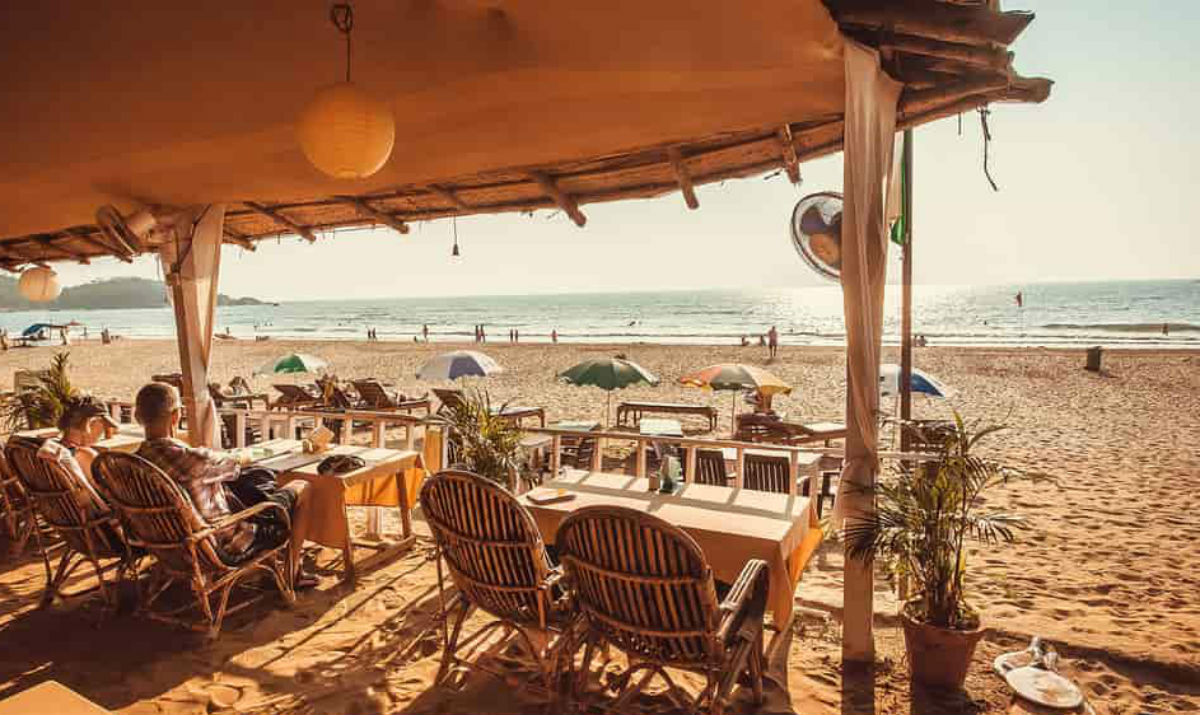Nestled along the golden shores of India, Goa stands as a testament to a rich cultural history and architectural evolution shaped by over four centuries of Portuguese rule. The Indo-Portuguese architectural style, characterized by ornate churches, historical forts, and exquisite homes, reflects a unique fusion of Indian and European design influences. This architectural legacy, distinct and timeless, continues to define Goa’s identity. In this exploration, we delve into the fascinating narrative of these structures, which tell a story of resilience, creativity, and cultural harmony.
The Enduring Legacy of Time-Honored Design
Before Goa gained independence in 1961, the Portuguese influence on its architectural landscape was profound. Local homes, skillfully crafted by artisans, began to blend indigenous styles with Portuguese elements. Verandas, columns, and red-tiled roofs became signature features, giving the buildings throughout Goa their distinct character. These architectural elements were not merely decorative; they were functional adaptations to the region’s tropical climate, offering shade and ventilation. Landmarks such as Fort Aguada and Reis Magos Fort stand as enduring testaments to the lasting impact of this Indo-Portuguese fusion, their structures weathering centuries yet retaining the elegance of their design.
Churches as Architectural Icons
Goa’s religious architecture offers a stunning glimpse into the grandeur of Portuguese design. Old Goa, a UNESCO World Heritage Site, is home to an exceptional collection of churches and cathedrals that showcase the elegance of Portuguese architectural style. The Basilica of Bom Jesus, with its intricate baroque design and three-tiered façade, is a magnificent example of late Renaissance influence. The Cathedral of Santa Catarina, adorned with a colossal Golden Bell, merges Tuscan and Corinthian elements, creating a harmonious blend of grandeur and spiritual significance. From the Church of Saint Francis of Assisi to the Convent of Santa Monica, each religious edifice in Old Goa serves as a spiritual journey through time, where the Portuguese architectural ethos comes alive in every column, arch, and intricate carving.
City Planning: A Vision of Strategic Elegance
Goa’s cityscape reveals the foresight and strategic brilliance of Portuguese urban planning. Shaped by a defensive tradition, Goa’s cities were meticulously planned with a focus on both security and beauty. Villages were strategically positioned on elevated grounds, serving as bastions to protect the land. The urban layout, reminiscent of Lisbon’s settlement planning, often featured a semi-circular design with a major thoroughfare connecting the uptown and downtown areas. The fusion of architectural styles created intimate, shaded communities with narrow, winding roads and alleys that fostered a close-knit sense of belonging. These architectural configurations were not only aesthetically pleasing but also pragmatic, offering respite from the heat and responding to the region’s monsoon seasons.
Hybrid Constructions: A Fusion of European, Indian, and Islamic Styles
The evolution of Goan architecture between the 18th and early 20th centuries witnessed an extraordinary blending of Portuguese, Indian, and Islamic design influences. Early Goan homes, constructed with mud walls and thatched roofs, gradually transformed into permanent stone structures that embodied a unique architectural style. These homes, with their lime-plastered facades, often painted in bright whites, drew inspiration from Portugal’s Algarve region. Window and door surrounds were typically white-painted, and corners were accentuated with pilaster strips that gave the homes a defined, yet delicate appearance. This harmonious blend of styles resulted in an architectural legacy that is both visually striking and deeply rooted in cultural history.
Architectural Elements: A Symphony of Craftsmanship
Goa’s architectural heritage is not only reflected in its grand structures but also in the intricate craftsmanship that adorns its homes. The flooring in traditional Goan homes, once made from cow dung reflecting the region’s agricultural roots, gradually transitioned to clay and cement tiles as Portuguese influences permeated local design. The introduction of Japanese mosaic tiles further enriched the aesthetic, while the use of red oxide flooring became a common feature, adding vibrancy to the interiors. Exquisite railings crafted from cast iron, wood, and cement, often featuring curves, floral motifs, and geometric patterns, became distinctive elements of Goan homes. These intricate details exemplified the meticulous attention to craftsmanship that defined the Indo-Portuguese style.
One of the most fascinating features of Goan architecture is the use of oyster shells in doors and windows. These translucent “squares,” embedded in wooden frames, allowed natural light to filter into the rooms, casting a soft glow throughout the interiors. The use of these organic materials added an ethereal quality to Goan homes, blending functionality with artistry in a truly unique way. These architectural elements, from the ornate railings to the delicate shell-encrusted windows, tell a story of a time when craftsmanship was held in the highest regard, creating an atmosphere of elegance and charm.
A Unique Blend of Colonial and Indigenous Influences
The architectural development in Goa is a striking example of the cultural fusion that occurred as European, Indian, and Islamic influences converged. Portuguese colonists introduced their building techniques, but these were skillfully adapted by local artisans who incorporated indigenous materials and regional design principles. This process of adaptation gave rise to a style that was uniquely Goan—one that blended the grandeur of European design with the warmth and practicality of Indian and Islamic traditions. The result is a rich, diverse architectural heritage that continues to captivate visitors and residents alike.
Living History: Goa’s Architectural Identity
The beauty of Goa’s Indo-Portuguese architecture lies not only in its physical structures but also in the way these buildings serve as a living history. Each church, home, and fort tells a story of the past—of cultural exchange, artistic innovation, and a unique chapter in the history of India. The enduring presence of these structures allows us to connect with a time when Goa was at the crossroads of two distinct worlds: the Portuguese colonial empire and the ancient traditions of India.
As travelers explore the opulent homes and monumental churches that define Goa’s architectural landscape, they are not just admiring beautiful buildings. They are witnessing the confluence of history, culture, and design—elements that continue to shape the modern identity of Goa. Each arch, tile, and carving is a testament to a bygone era, a reminder of the skill, vision, and creativity that went into crafting this extraordinary architectural legacy.
Conclusion
The Indo-Portuguese architecture of Goa stands as a living testament to the enduring legacy of cultural fusion. From its baroque churches and sprawling forts to the quaint homes adorned with intricate railings and vibrant tiles, Goa’s architecture offers a glimpse into the region’s rich past. These structures, weathered yet timeless, continue to inspire admiration for their beauty, craftsmanship, and historical significance. In Goa, the past coexists with the present, offering all who visit a chance to step into a world where time seems to stand still. Here, the stories of Indo-Portuguese architecture unfold with grace and elegance, inviting visitors to explore the legacy of a bygone era, preserved in every stone and every detail





























